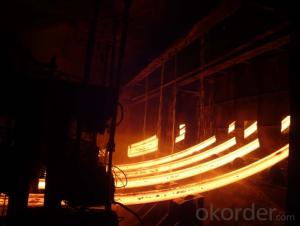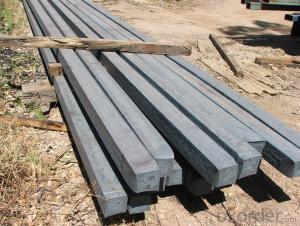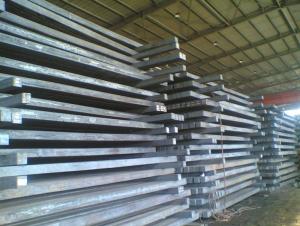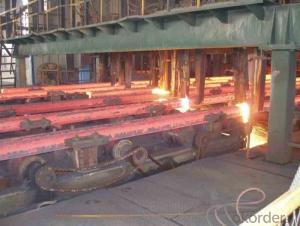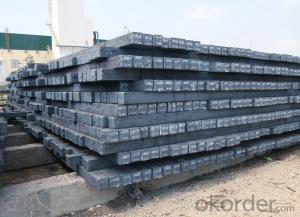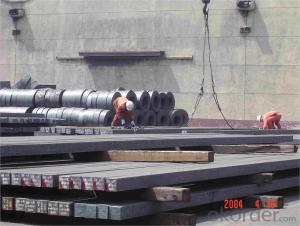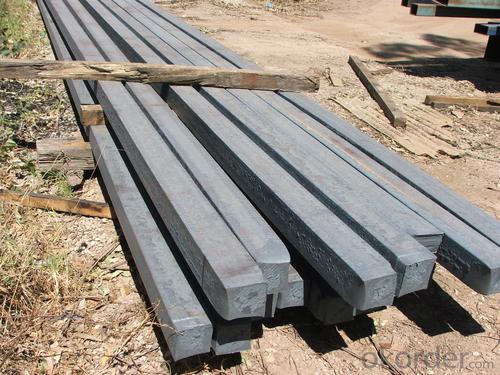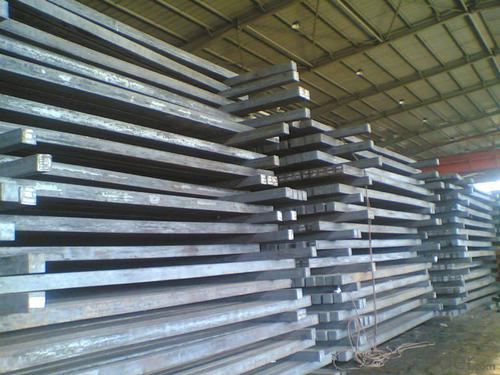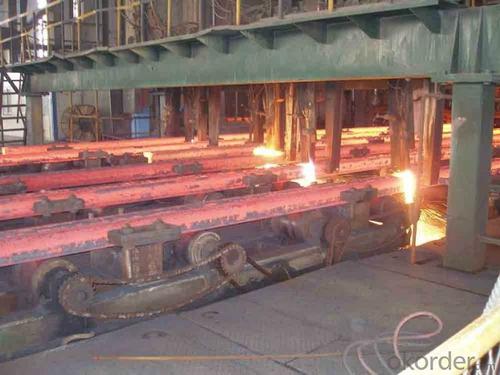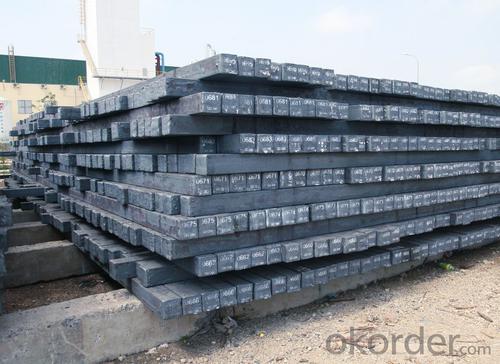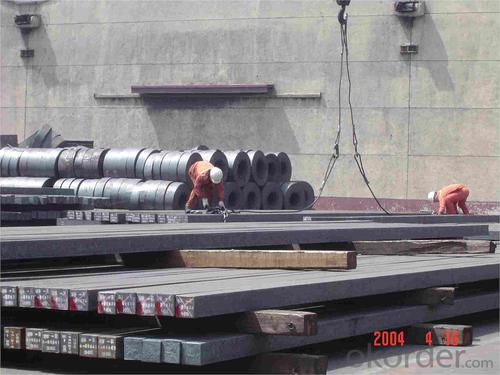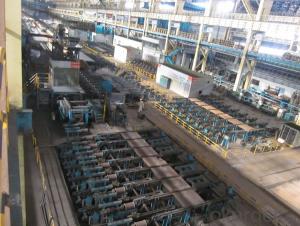Q235/3SP 170MM Blast Furnace Hot Rolled Steel Billet
- Loading Port:
- Tianjin
- Payment Terms:
- TT OR LC
- Min Order Qty:
- 2000 m.t.
- Supply Capability:
- 30000 m.t./month
OKorder Service Pledge
OKorder Financial Service
You Might Also Like
Description of Q235/3SP 170MM Blast Furnace Hot Rolled Steel Billet
Our hot dip galvanised steels consist of a steel substrate with a metallic zinc coating applied by means of a continuous hot dip galvanising process. Metallic zinc coatings are available in steel grades ranging from steel for bending and deep drawing applications, to structural steels and high yield strength steels.
A glossy surface finish obtained under specific skin-pass conditions (either non-skin-passed or skin- passed with smooth cylinders to obtain low roughness) can be provided if required at time of enquiry.
Advantage of Q235/3SP 170MM Blast Furnace Hot Rolled Steel Billet
Uncoated CR steel sheet With the features of in line with the international highest standards in demension and shape, excellent surface finish and properties, the products are mainly used in home appliance and automobile industries.
Galvanized steel sheet(include HDG and EG)
With the features of good corrosion resistance, the products are mainly used in automobile, home appliance, electronics, building and machinery manufacture industries, etc.
Precoated steel sheet With the features of enviromental protection and good processablility, long lasting surface durability, rich in colors, the products are maily used in building, home appliance and furniture industries, etc.
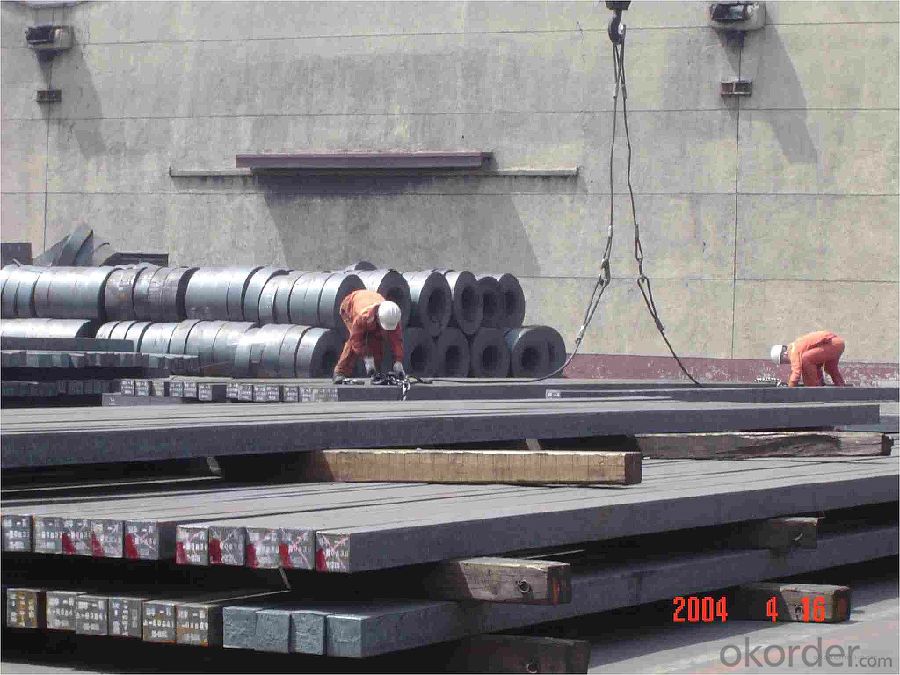
Applications of Q235/3SP 170MM Blast Furnace Hot Rolled Steel Billet
Our hot dip galvanised steels can be used in a very wide range of applications for industrial markets, both indoors and outdoors. Some of the most common applications are:
Building: wide sections for roofing and cladding, doors, door frames, metallic ceilings, partitions, structural members etc
Domestic appliances: all appliances for this sector (both white and brown goods) are manufactured with hot dip galvanised steels
Miscellaneous: electrical cabinets, aeraulic components, air conditioners, road signs etc
Zinc hot dip galvanised steel is suitable for contact with foodstuffs under certain conditions, as specified in European directive 89/109/EEC and French standard NF A 36-712-1. Please contact us for further information on this subject.
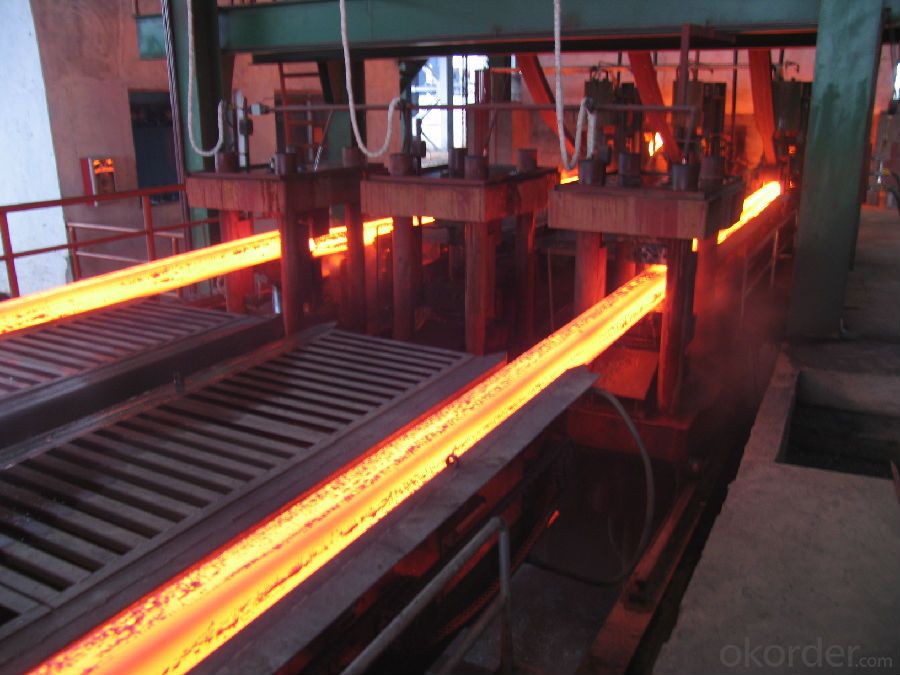
Specifications of Q235/3SP 170MM Blast Furnace Hot Rolled Steel Billet
Quality | Q/BQB 440-2003 | JIS G3312-1994 JIS G3321 | EN 10326-2004 | ASTM A653-02a |
EN 10327-2004 | (BASE PLATE) | |||
(BASE PLATE) | ||||
Commercial Steel | DC51D | SGCC SGLCC | DX51D+Z DX51D+AZ | CS Type A/B/C |
Forming Steel | St01,St02,St03 | SGCD1 SGLCD1 | FS Type A, Type B | |
Drawing | DC52D /DC53D | - | DX52D+Z DX52D+AZ | DDS TYPE A/C |
Steel | DX53D+Z DX53D+AZ | |||
Structural | S280GD (StE28) | SGC400 SGLC400 | S280D+Z DX54D+AZ | SS275 |
Steel | S350GD (StE34) | SGC440 SGLC440 | S350D+Z S350D+AZ | SS340 Class1 |
FAQ of Q235/3SP 170MM Blast Furnace Hot Rolled Steel Billet
We have organized several common questions for our clients,may help you sincerely:
1. How Can I Visit There?
Our company is located in Tianjin City, China, near Beijing. You can fly to Tianjin Airport Directly. All our clients, from home or aboard, are warmly welcome to visit us!
2. How Can I Get Some Sample?
We are honored to offer you sample.
3. Why choose CNBM?
Our delivery time about 15-20days for standard sizes, if you have other requirements like hardness, quanity and width ,it is about 20-40days. But don't worry we also try our best for the delivery time ,because time longer and our cost is higher.
- Q: What are the different methods of steel billet surface honing?
- There are various techniques available for honing the surface of steel billets, each serving a specific purpose and yielding distinct outcomes. Some commonly employed methods are as follows: 1. Manual Honing: This traditional approach entails the use of handheld honing tools, such as stones or abrasive pads, to manually eliminate imperfections or roughness from the steel billet's surface. Skilled operators meticulously rub the honing tool along the billet's surface until the desired level of smoothness is attained. 2. Mechanical Honing: To automate the honing process, mechanical honing machines are employed. These machines are equipped with rotating abrasive stones or pads that traverse the billet's surface, eliminating any irregularities. Mechanical honing allows for a more consistent and precise honing process, with the ability to control factors such as pressure, speed, and contact area. 3. Diamond Honing: Diamond honing is a specialized technique that utilizes tools coated with diamond particles to achieve a high level of precision and smoothness. The diamond particles on the honing tool offer superior cutting capabilities, enabling the removal of even the smallest imperfections. This method is often utilized for honing high-quality steel billets that necessitate a flawless surface finish. 4. Hydrohoning: Also known as abrasive flow machining, hydrohoning involves employing a viscous abrasive medium that is forced through the internal passages of the billet to eliminate surface irregularities. This method is particularly effective for honing complex shapes or hard-to-reach internal surfaces. The abrasive medium can be adjusted to obtain different levels of surface finish. 5. Electrochemical Honing: Electrochemical honing combines the principles of electrochemical machining and honing. It involves utilizing a specialized electrolyte solution and a honing tool with an electrode to remove material from the billet's surface. This method is effective for honing hard materials and achieving a smooth, mirror-like finish. These represent only a selection of the diverse methods available for honing the surface of steel billets. The choice of technique relies on factors such as the desired surface finish, the complexity of the billet's shape, the material being honed, and the level of precision required.
- Q: Can steel billets be used in the automotive industry?
- Yes, steel billets can be used in the automotive industry. They are commonly used as raw materials for manufacturing various automotive components such as engine blocks, transmission gears, axles, and suspension parts. The high strength and durability of steel make it an ideal choice for ensuring the safety and performance of vehicles.
- Q: How are steel billets inspected for internal defects?
- Various non-destructive testing (NDT) techniques are utilized to inspect steel billets for internal defects. Ultrasonic testing (UT) is a common method wherein high-frequency sound waves are employed to detect flaws within the billet. By sending ultrasonic waves into the billet and analyzing the reflected waves, any internal flaws can be identified. UT has the capability to detect defects such as cracks, voids, inclusions, and other irregularities. Another technique used is magnetic particle inspection (MPI), which is particularly effective for identifying surface and near-surface defects in ferromagnetic materials like steel. By applying a magnetic field to the billet and spreading iron particles over its surface, any defects will cause the particles to form visible indications, thereby providing a clear indication of internal flaws. Liquid penetrant testing (PT) is another widely employed method for inspecting steel billets. This process involves applying a liquid dye to the billet's surface and allowing it to penetrate any surface-breaking defects. After a designated time, excess dye is removed and a developer is applied. The developer draws out the penetrant from any defects, making them visible under suitable lighting conditions. Furthermore, radiographic testing (RT) can be utilized to detect internal defects in steel billets. This method utilizes X-rays or gamma rays to capture images of the billet's internal structure. As the radiation passes through the billet, a film or digital detector records the transmitted radiation. Any internal defects will appear as shadows on the image, facilitating their identification. In summary, a combination of these NDT techniques is often employed to ensure a comprehensive inspection of steel billets for internal defects. This aids in maintaining the quality and integrity of the billets, ensuring they meet the necessary specifications and standards.
- Q: How are steel billets used in the production of seamless pipes?
- Seamless pipes, which are manufactured without welding or seams, require steel billets as a fundamental component in their production process. Steel billets are rectangular-shaped solid pieces of steel that serve as the raw material for seamless pipe manufacturing. To produce seamless pipes, the initial step is melting steel in a furnace to obtain molten metal. This molten steel is then poured into molds to shape steel billets. These billets are then heated to a specific temperature and pierced using a piercing mill. This mill exerts both axial and radial forces, pushing a pointed mandrel through the center of the billet, resulting in a hollow tube or shell. Following the piercing process, the hollow tube is further elongated and reduced in diameter by a series of rolling mills. These mills apply a combination of rotational and compressive forces to shape the billet into the desired seamless pipe size. The seamless pipe undergoes continuous stretching and rolling until it reaches the desired length and diameter. The utilization of steel billets in the production of seamless pipes holds significant importance for several reasons. Firstly, the billets are crafted from high-quality steel, guaranteeing the strength and durability of the final product. Secondly, the uniformity and consistency of the billets allow for precise shaping and seamless pipe dimensions. Lastly, the solid structure of the billets enables them to withstand the intense forces and temperatures involved in the pipe manufacturing process. In conclusion, steel billets assume a crucial role in the production of seamless pipes. From being melted and molded into billets to being pierced, elongated, and rolled, these billets undergo a series of processes that transform them into high-quality seamless pipes. The use of steel billets ensures the integrity and reliability of seamless pipes, making them suitable for various industrial applications.
- Q: Are steel billets used in the production of household appliances?
- No, steel billets are typically not used in the production of household appliances.
- Q: What are the different grades of steel used for making billets?
- There are several different grades of steel used for making billets, including low carbon steel, mild steel, medium carbon steel, high carbon steel, and alloy steel. The specific grade chosen depends on the desired properties and characteristics required for the intended application of the billets.
- Q: What is the active carbon. What is the difference with the charcoal?
- Activated carbon activated carbon after activation of the solid carbon black porous. A general powder, granular or pellet, carbon as a main component, also containing a small amount of oxygen, hydrogen, nitrogen, sulfur and chlorine. The early production of activated carbon as raw materials for wood, hard shell or animal bone, later used by coal production method a: the steam and gas activation method. The use of water vapor or carbon dioxide at 850 ~ 900 C carbon activation.
- Q: How are steel billets used in the manufacturing of oil and gas pipelines?
- Steel billets are of utmost importance when it comes to the production of oil and gas pipelines. They serve as the primary material from which pipes are derived. Essentially, steel billets are partially finished forms of steel that are cast into specific shapes and sizes for further processing. In order to manufacture oil and gas pipelines, the initial step involves melting steel scrap and other alloys in a furnace to create molten steel. This liquid metal is then poured into molds or continuous casting machines to produce steel billets. These billets usually have a cylindrical shape and can vary in length and diameter depending on the desired specifications of the pipeline. After the steel billets have cooled down and solidified, they undergo various shaping processes, such as hot rolling or extrusion, to transform them into seamless or welded pipes. Hot rolling entails passing the billets through a series of rollers that apply pressure and heat in order to shape them into the desired pipe form. On the other hand, extrusion involves forcing the billets through a die to create the pipe shape. The resulting pipes then undergo further processing through techniques like heat treatment, machining, and coating to enhance their strength, durability, and resistance to corrosion. These processes ensure that the pipes can endure the harsh conditions and pressures encountered in the oil and gas industry. All in all, steel billets play a critical role in the production of oil and gas pipelines as they supply the starting material for creating the pipes. Their strength, versatility, and ability to withstand extreme conditions make them the ideal choice for constructing pipelines that transport oil and gas over long distances.
- Q: Can the production of continuous casting billet be damaged by using intermediate frequency electric furnace?
- No, as long as the quality of the billet is OK
- Q: After processing to the color coating board, is there a fare increase of 1000?The price of galvanized coil is about +350 per ton of cold-rolled steel at present What about the cost of billet to cold rolling?What is the final cost of making the color coated sheet? How do you figure that?
- I think that the cost of steel billet plus manual consumption plus electricity and other costs divided by the finished product is greater than the cost per ton
Send your message to us
Q235/3SP 170MM Blast Furnace Hot Rolled Steel Billet
- Loading Port:
- Tianjin
- Payment Terms:
- TT OR LC
- Min Order Qty:
- 2000 m.t.
- Supply Capability:
- 30000 m.t./month
OKorder Service Pledge
OKorder Financial Service
Similar products
Hot products
Hot Searches
Related keywords
